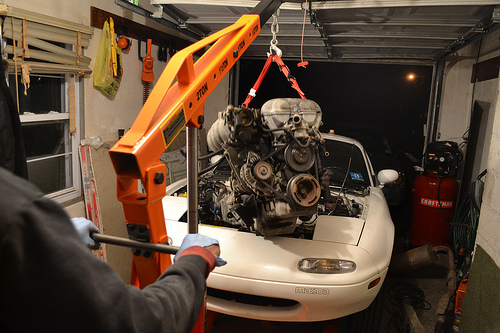Blog

What Happens When an Engine is Rebuilt
A rebuilt engine involves removing the engine from the vehicle and completely disassembling it from what's commonly referred to as "carb to pan". This is an older description when engines had carburetors instead of fuel injection systems they have now, so today it would be referred to as "Injector to Pan," with the pan being the oil pan. Once the engine has been disassembled, cleaned, and inspected, all damaged parts are replaced with new or refurbished replacement parts. All new gaskets, seals, and lubricants are used in the assembly of the rebuilt engine that will meet OEM standards.
The most common components to be replaced include O rings, bearings, gaskets, seals, timing belt or chain, valve springs, and the oil pump. Major parts are replaced only if they are needed, and often include camshafts, crankshafts, and pistons.
If severe damage occurred to your engine, the engine block may have to be bored to align the crankshaft main bores. The cylinders may need to be bored to fit new pistons. This is more extensive work, but it will allow the engine to work once again. In general, there are only two instances where the choice is not an option.
*The engine block has been damaged internally due to broken connecting rod or crankshaft
*The exterior of the engine block has been cracked or "windowed" - which happens when an internal component punches a hole in the block.
Under other issues, having the engine rebuilt is a realistic option
The Advantages of Rebuilding
Once the engine is rebuilt, you know everything has been closely inspected and it has many new parts. It will extend the length of life for the engine. How long it will last depends on how many components were replaced. Another benefit is that you are recycling engine parts to help reduce the amount of scrap in the environment.
However, arguably the best benefit of engine rebuilding is the connectivity and compatibility with the existing ECU and electrical system. The ECU is programmed to communicate with the engine originally installed in the vehicle. In many cases, when a new engine is installed, the ECU has problems connecting and communicating with the new engine. In most cases, an engine swap will require either a reprogramming of the ECU or replacement.
If you have the opportunity to choose between a repair or replacement, it is always advised to repair the existing engine with new, OEM replacement parts to reduce the potential of compatibility issues. (Source:Yourmechanic).
Posted on October 2017,26 // Author: Admin